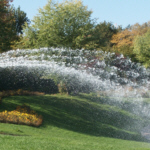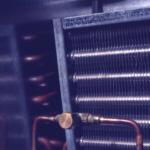| The Project



Cosy atmosphere at home due to low temperature heating with the help of ground, air and water source heat pumps.
|
 |
Monitoring and Development
Due to a comprehensively measured analysis of different electric driven compression heat pumps in real-life conditions, findings will contribute to the improvement of the heat pumps and the systemís technique. In order to meet the projectís expectations, 140 heat pumps produced by 7 manufacturers shall be examined over two winters, i.e. heating periods and two summer periods. The main focus revolves around developing optimized concepts for heat pumps used in low-energy demanding houses with a heating demand lying between that of passive and KfW-60 houses.
For the type of buildings mentioned above, heat pumps previously developed are very often over-compensating. For houses with an even smaller demand, there are compact heating and ventilation devices with integrated exhaust air heat pumps which have been designed since 1997. These systems, however, can hardly cover a bigger heating demand than that of a passive house because exhaust air has only limited usage as a heat source. Ground source heat pumps that are currently available are reaching more and more satisfying annual SPFs, however, are overcompensating for the described type of buildings and therefore have to be combined with big thermal storage, in order to prevent the heat pump from running too often. The lack of technique for these buildings shall be made up for by the use of efficiently working heat pumps which, at the same time, is the main purpose of this research project. Above all, this means developing optimized heat pumps for a low heating and DHW demand.
The examination shall also take into consideration the refrigerant loss of stationary modern heat pump systems as a result of leakage in the devices. So far, the TEWI value (total equivalent warming impact) is assumed with an average yearly loss of 2%-of the overall filling quantity. Presumably, this value is too high for modern heat pump systems which results in a negative environmental evaluation of heat pumps (although they are a very good device in the field of renewable energies). Heat pumps showing a high refrigerant loss during the field test will be further examined on the spot (at the location where the heat pump is installed) to find out where the leak is and this then will lead to future recommendations as to how one can avoid such a loss.
|